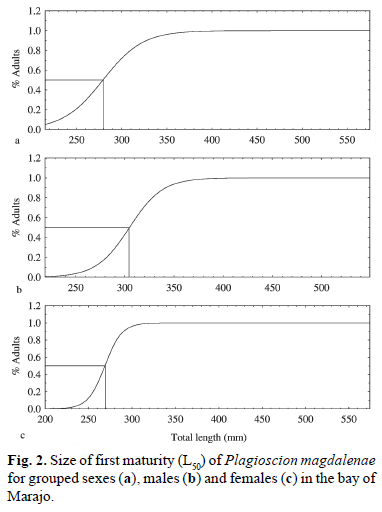Plagioscion magdalenae (pacora) is a commercially important benthopelagic sciaenid and widely distributed in the Amazon River basin. The present study describes the reproductive biology of this species in the bay of Marajo, Amazon Estuary, Brazil. The gonadal development stage, age and size at first sexual maturity (L50), sex ratio, and reproductive strategy were determined. The data were collected bi-monthly from December 2005 to October 2006. A total of 251 specimens were examined, with the total length (TL) ranging between 220 and 590 mm. The weight-length relationship for females, males and grouped sexes was highly significant, showing a positive allometry. The L50 was of 279 mm for grouped sexes, with 305 mm and 269 mm TL for females and males respectively. The sex ratio for the total number of individuals favored the males (2.02 males: 1 female). Macroscopically, the gonads were classified as immature, maturing, mature and spent. Considering the macro and microscopic evaluation of the gonads, an extended spawning period, mainly in August to February, was observed.
Reproduction; Amazon; Length maturity; Sexual proportion














